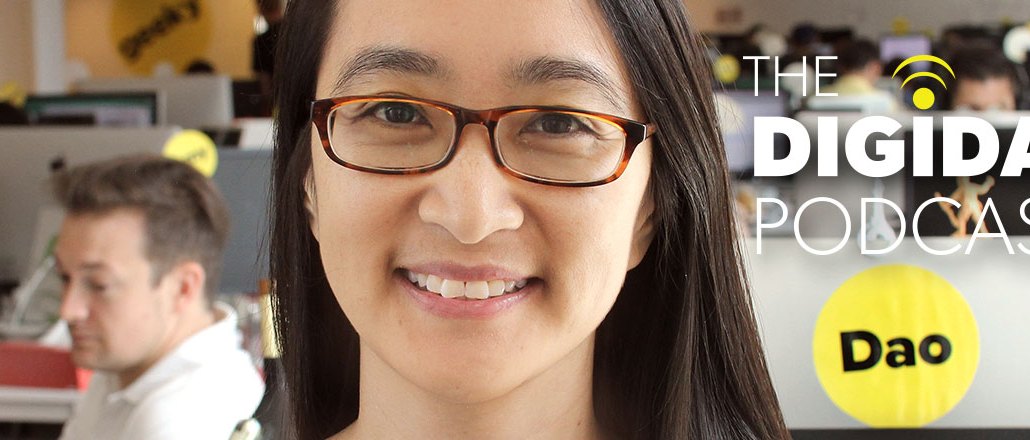Save 50% on a 3-month Digiday+ membership. Ends Dec 5.

Subscribe: iTunes | Stitcher | RSS
BuzzFeed’s rise was made possible, in large part, by platforms like Facebook. These new distribution engines allowed BuzzFeed content to go viral and reach enormous audiences.
Now, those platforms are shifting — and so is BuzzFeed. Facebook and its ilk now would like publishers to publish content directly onto their platforms rather than redirect traffic back to publishers’ properties. Three-quarters (77 percent) of BuzzFeed’s total audience is now reading BuzzFeed on a distributed network of 30 platforms where it publishes content. But Dao Nguyen, BuzzFeed’s publisher and point person for distribution, believes the change is not as drastic as some make it.
“We’ve always been dealing with platforms, even when the content was on our platform,” she said on this week’s episode of the Digiday Podcast. “We don’t think of ourselves as an island. We are part of this internet ecosystem that changes all the time. Even when we were basically a website, what happened on Facebook had a big impact. One of the reasons why we’re adept at making distributed content is we’ve always thought of our content on other platforms.”
And, more to the point, there is little incentive to fight the internet. All platforms are linked, “even more than what makes most people comfortable,” said Nguyen, so there’s little choice but to embrace the network.
“You’re still focused on that ecosystem even if you’re just focusing on your [owned and operated properties],” she said. “Facebook is still sending traffic, Google is still sending traffic. Twitter and Pinterest are still sending traffic. People are still discovering content in one place and sharing it in another. I don’t think it’s true that if we retreated into our O&O, that suddenly we’d be immune to things that happen.”
Ad position: web_incontent_pos1
Below are highlights, edited for clarity, of the episode with Nguyen.
Monetization will catch up to distributed models.
Nguyen, though publisher, does not work on the revenue side of BuzzFeed. Her remit is around data science and distribution. But BuzzFeed’s shift to platforms has shone a light on the adaption of its monetization model. The Financial Times recently reported that BuzzFeed missed its financial targets, which Digiday also reported earlier this year. Nguyen did not address those reports, but agreed that the revenue shift generally trails the audience shift. The key, in her mind, is to remain flexible about what form the content (and advertising) takes.
“That gap doesn’t have to be very long,” Nguyen said. “It’s probably shrinking over time. Part of it is being able to adapt what you’re monetizing and how you’re monetizing it instead of trying to do the same thing somewhere else.”
BuzzFeed is not a tech company.
It was stylish for a time for digital media companies to paint themselves as tech platforms. That was, often, what venture capitalists wanted to hear. But at its heart, Nguyen considers BuzzFeed a media company, albeit one with strong data and tech chops.
“We’re a media company because that is how we’re known to our consumers and to our advertisers,” she said. “We make media. There’s a false dichotomy that you have to be one or the other. We are a media company; we have a strong technology department. I don’t think being a media company precludes us from having a great tech team.”
“The process” is what makes BuzzFeed tick.
There’s a myth Nguyen wants to dispel: BuzzFeed does not have clever data scientists telling its writers what’s going to go viral. Data is part of the picture, but not as important as what Nguyen calls “the process.” That’s repeating content, across platforms and geographies, and continuously learning what works and what doesn’t. Nguyen herself created a viral post, “27 Signs You Were Raised By Asian Immigrant Parents,” based off the work of previous posts in the same vein.
Ad position: web_incontent_pos2
“The process is the combination of many things,” she said. “It’s having the data available to you of all the content that’s made; it’s curiosity and a continual learning process.”
Thank a goat prank for the watermelon Facebook video.
BuzzFeed scored the first viral hit of Facebook’s live video when it broadcast people putting rubber bands around a watermelon until it inevitably exploded. Many were baffled this drew more than 10 million views. But it was actually a result of “the process,” according to Nguyen. BuzzFeed video staffers a week earlier played a prank on video boss Ze Frank by filling his office with baby goats on his birthday. They started live streaming on Facebook his office, waiting for Frank to arrive. To their surprise, as Frank was repeatedly delayed, the video gained steam and drew 80,000 viewers.
“It was a shared experience of waiting for something to happen,” Nguyen said. “You knew what was going to happen, but it was shared experience it was going to happen. Once he came in, nobody was interested to see what he’d say about it.”
More in Media

Digiday+ Research Subscription Index 2025: Subscription strategies from Bloomberg, The New York Times, Vox and others
Digiday’s third annual Subscription Index examines and measures publishers’ subscription strategies to identify common approaches and key tactics among Bloomberg, The New York Times, Vox and others.

From lawsuits to lobbying: How publishers are fighting AI
We may be closing out 2025, but publishers aren’t retreating from the battle of AI search — some are escalating it, and they expect the fight to stretch deep into 2026.

Media Briefing: Publishers turn to vertical video to compete with creators and grow ad revenue in 2026
Publishers add vertical video feeds to their sites to boost engagement, attract video ad spend and compete with news creators.
Ad position: web_bfu